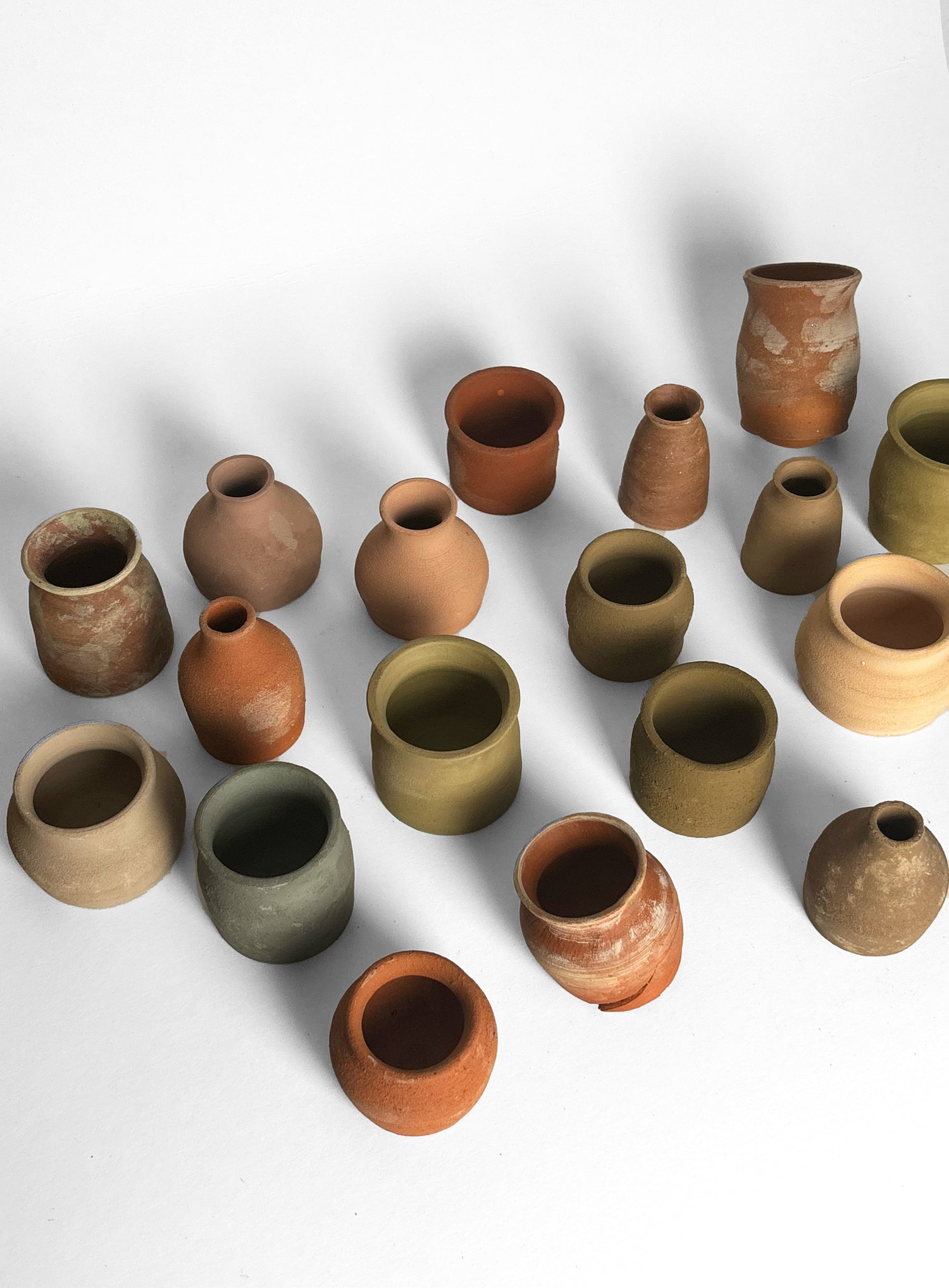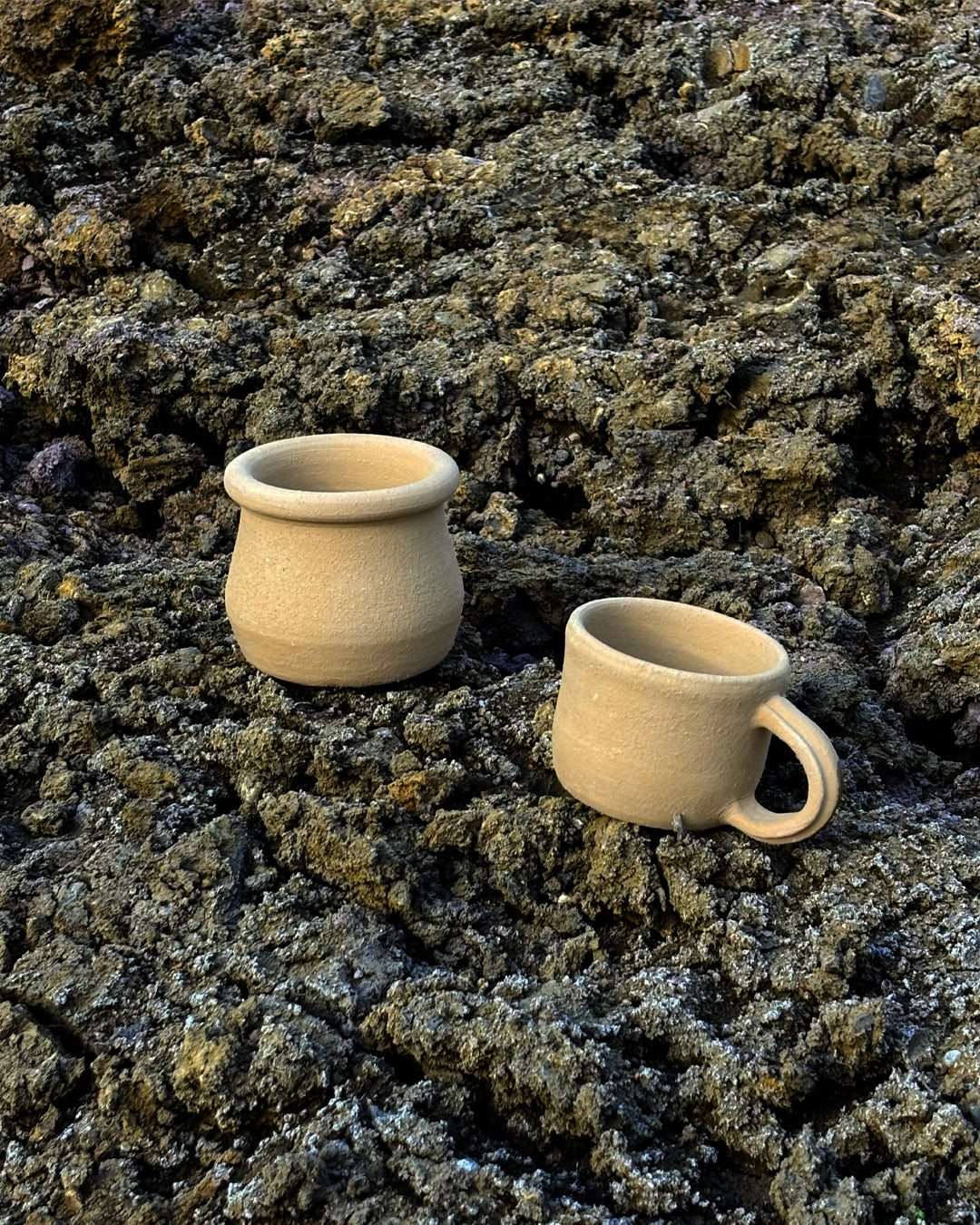Projects

Material Place
This project investigates a sense of place through materiality. Taking an exploratory approach, Neve Beill walked along areas of the River Thames and the coast of the Isle of Wight, collecting various wild clays and other natural materials to create two distinct collections of pots and compare outcomes.

The Garden Isle
An exploratory project using nine distinct clays sourced from across the Isle of Wight to create a collection inspired by traditional Roman forms, local folklore, and the island’s rich wildlife. Each piece reflects the unique character of its origin and the stories rooted in the landscape.

Salvaged Clay
In the Uk thousands of tonnes of clay is excavated, during construction projects, each year. This is often classed as 'waste' and sent to landfills. This project aims to utilise this unused material.
